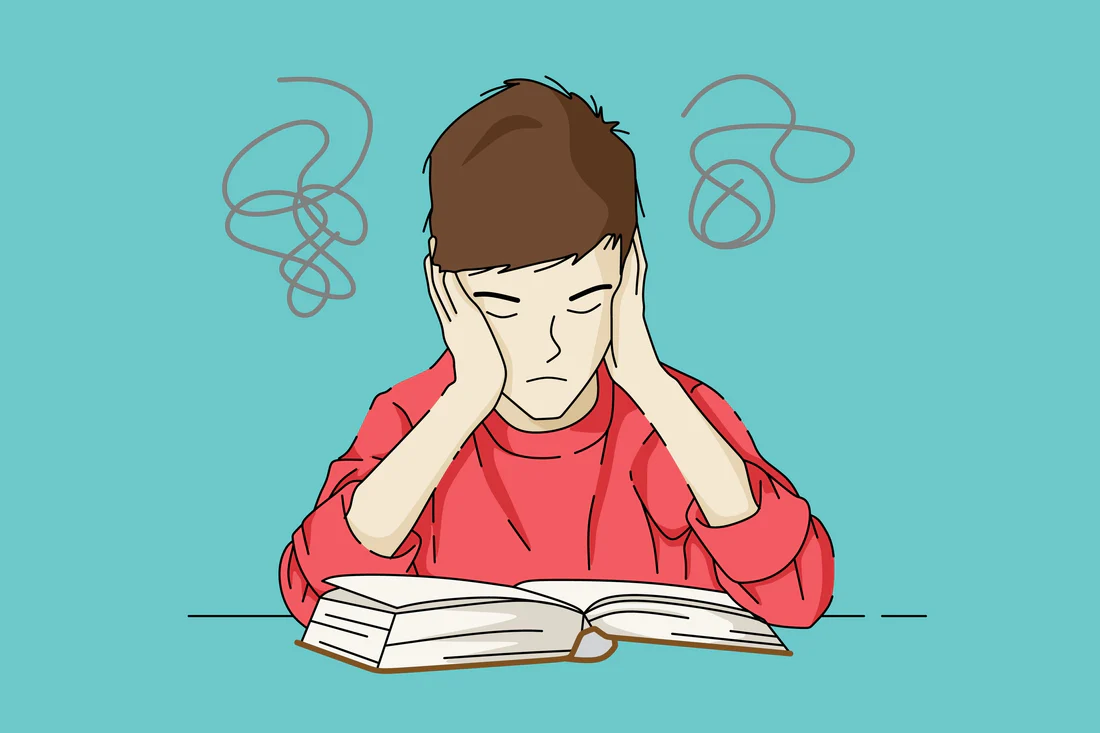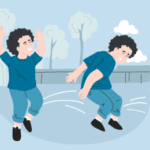
Sensory Processing Disorder
- Signs and Symptoms of Sensory Processing Disorder in Children
- Sensory Processing Disorder in Teens: Signs, Symptoms, Diagnosis & Treatment
- Sensory Processing Disorder (SPD) in Adults: Signs, Diagnosis, Treatment & Coping Strategies
- Types of Sensory Processing Disorder (SPD): Symptoms, Characteristics & Treatment
- Sensory Processing Disorder Treatment Options & Best Therapies for SPD in Children and Adults
- Living with Sensory Processing Disorder: Daily Tips, Support Strategies, and Family Guidance
- Vestibular and Proprioceptive Processing in Sensory Processing Disorder (SPD)
- Causes and Risk Factors of Sensory Processing Disorder (SPD): What Science Knows
- How Is Sensory Processing Disorder Diagnosed? Tests, Signs, and Evaluation Tools
- Stimming Behaviors in Sensory Processing Disorder: What They Are and Why They Matter
- Sensory Processing Disorder and Learning: How Sensory Challenges Affect Education
- Sensory Diet Strategies for Kids: Effective Tools for Sensory Regulation
- Sensory Integration Disorder and Sensory Integration Therapy
- Sensory Discrimination Disorder
- Sensory Modulation Disorder: Symptoms, Subtypes, and Treatment Strategies
- Sensory Over-Responsivity (SOR): Signs, Causes, and How to Help Kids and Adults Cope
- Sensory Under-Responsivity: Signs, Causes, and Support for Children and Adults
- Sensory-Based Motor Disorder: Signs, Symptoms, and Effective Treatments for Children and Adults
- Visual Processing Disorder: Signs, Symptoms & How to Support Visual Learning Challenges
- Auditory Processing Disorder (APD): Symptoms, Diagnosis & Treatment for Children and Adults
- Sensory Seeking/Craving: Understanding, Identifying, and Supporting Sensory Seekers
- Dyspraxia (Developmental Coordination Disorder): Understanding SBMD and Its Impact
- Postural Disorder: Causes, Symptoms & Treatment | Sensory-Based Motor Disorder Guide
Dyspraxia (Developmental Coordination Disorder): Understanding SBMD and Its Impact

Authored by: The DrSensory Editorial Team
Reviewed by: 🛡️ DrSensory Clinical Review Board
Last updated: June 2025
Dyspraxia (Developmental Coordination Disorder): A Form of Sensory-Based Motor Disorder (SBMD)
Dyspraxia, also known as Developmental Coordination Disorder (DCD), is a neurodevelopmental condition characterized by difficulties in motor coordination and planning. It is a subtype of Sensory-Based Motor Disorder (SBMD), where challenges in processing sensory information lead to impaired motor responses.
What Is Dyspraxia?
Dyspraxia affects the brain’s ability to plan and coordinate physical movements, leading to challenges in performing everyday tasks. Individuals with dyspraxia may experience:
- Clumsiness: Frequent tripping, bumping into objects, or dropping things.
- Poor Motor Coordination: Difficulty with tasks requiring fine or gross motor skills.
- Motor Planning Challenges: Trouble organizing and executing movements in the correct sequence.
- Postural Instability: Difficulty maintaining balance and posture.
Causes and Risk Factors
The exact cause of dyspraxia is not fully understood, but several factors may contribute:
- Genetic Factors: Family history of motor coordination difficulties.
- Neurological Development: Delays or differences in brain development affecting motor areas.
- Premature Birth: Being born prematurely can increase the risk.
- Environmental Factors: Prenatal exposure to toxins or complications during pregnancy.
Symptoms Across the Lifespan
In Children
- Delayed Milestones: Late sitting, crawling, or walking.
- Difficulty with Fine Motor Tasks: Challenges in using utensils, tying shoelaces, or handwriting.
- Poor Spatial Awareness: Trouble navigating spaces, leading to accidents or falls.
- Difficulty Following Instructions: Struggles with multi-step directions.
In Adults
- Clumsiness: Ongoing issues with coordination and balance.
- Time Management Challenges: Difficulty organizing tasks and managing time effectively.
- Social Difficulties: Challenges in social interactions due to motor coordination issues.
- Low Self-Esteem: Feelings of inadequacy stemming from motor difficulties.
Diagnosis and Assessment
Diagnosing dyspraxia involves:
- Developmental History: Reviewing milestones and early development.
- Motor Skill Assessments: Evaluating fine and gross motor skills.
- Cognitive Evaluations: Assessing planning, sequencing, and problem-solving abilities.
- Exclusion of Other Conditions: Ensuring symptoms are not due to other medical or neurological disorders.
Treatment and Management Strategies
While there is no cure for dyspraxia, various interventions can help manage symptoms:
- Occupational Therapy: Focuses on improving fine motor skills and daily functioning.
- Physical Therapy: Aims to enhance balance, coordination, and strength.
- Speech and Language Therapy: Addresses any communication difficulties.
- Educational Support: Implementing strategies to assist in learning and task completion.
Can dyspraxia improve over time?
With appropriate interventions, individuals can develop strategies to manage symptoms and improve motor skills. However, challenges may persist into adulthood.
Are there any support groups for dyspraxia?
Yes, various organizations and online communities provide support, resources, and information for individuals with dyspraxia and their families.
Signs of Dyspraxia (Developmental Coordination Disorder) Checklist
Use this to observe patterns in motor coordination, planning, and daily functioning. If multiple signs appear frequently, consider a formal evaluation by an occupational therapist or developmental specialist.
🧠 General Coordination Difficulties
- ☐ Appears clumsy or uncoordinated
- ☐ Frequently bumps into objects or people
- ☐ Trips or falls more often than peers
- ☐ Has difficulty judging distance, depth, or space
- ☐ Struggles with balance (e.g., standing on one foot, hopping)
✋ Fine Motor Skill Challenges
- ☐ Difficulty holding a pencil correctly or writing legibly
- ☐ Trouble with tasks like buttoning, zipping, tying shoelaces
- ☐ Struggles to use scissors or utensils properly
- ☐ Avoids drawing, coloring, or detailed hand tasks
- ☐ Poor hand-eye coordination
🦶 Gross Motor Skill Delays
- ☐ Late to sit, crawl, walk, or ride a bike
- ☐ Awkward posture or gait
- ☐ Difficulty catching, throwing, or kicking a ball
- ☐ Struggles to learn coordinated movements (e.g., skipping, jumping jacks)
🧩 Motor Planning & Sequencing Issues
- ☐ Needs extra time to start or finish physical tasks
- ☐ Struggles to follow multi-step directions
- ☐ Becomes overwhelmed when routines or tasks change
- ☐ Difficulty imitating movements (e.g., clapping games, exercise routines)
📚 Academic and Classroom Indicators
- ☐ Poor handwriting or slow writing speed
- ☐ Avoids PE, handwriting, or art activities
- ☐ Trouble copying from the board
- ☐ Fatigues quickly from physical or writing tasks
😟 Emotional and Social Impact
- ☐ Easily frustrated with physical tasks
- ☐ Avoids group play or physical games
- ☐ Low self-esteem related to clumsiness or performance
- ☐ Displays anxiety or embarrassment during motor tasks
✅ Helpful Tip
If you check multiple items across several categories, especially if they interfere with daily life, a professional evaluation can help determine if dyspraxia (DCD) is present and what supports are needed.
This page provides general educational content and is not a substitute for professional medical advice. Always consult a licensed provider for diagnosis and treatment.
View privacy policy, copyright and trust info
More on SPD

- Signs and Symptoms of Sensory Processing Disorder in Children
- Sensory Processing Disorder in Teens: Signs, Symptoms, Diagnosis & Treatment
- Sensory Processing Disorder (SPD) in Adults: Signs, Diagnosis, Treatment & Coping Strategies
- Types of Sensory Processing Disorder (SPD): Symptoms, Characteristics & Treatment
- Sensory Processing Disorder Treatment Options & Best Therapies for SPD in Children and Adults
- Living with Sensory Processing Disorder: Daily Tips, Support Strategies, and Family Guidance
- Vestibular and Proprioceptive Processing in Sensory Processing Disorder (SPD)
- Causes and Risk Factors of Sensory Processing Disorder (SPD): What Science Knows
- How Is Sensory Processing Disorder Diagnosed? Tests, Signs, and Evaluation Tools
- Stimming Behaviors in Sensory Processing Disorder: What They Are and Why They Matter
- Sensory Processing Disorder and Learning: How Sensory Challenges Affect Education
- Sensory Diet Strategies for Kids: Effective Tools for Sensory Regulation
- Sensory Integration Disorder and Sensory Integration Therapy
- Sensory Discrimination Disorder
- Sensory Modulation Disorder: Symptoms, Subtypes, and Treatment Strategies
- Sensory Over-Responsivity (SOR): Signs, Causes, and How to Help Kids and Adults Cope
- Sensory Under-Responsivity: Signs, Causes, and Support for Children and Adults
- Sensory-Based Motor Disorder: Signs, Symptoms, and Effective Treatments for Children and Adults
- Visual Processing Disorder: Signs, Symptoms & How to Support Visual Learning Challenges
- Auditory Processing Disorder (APD): Symptoms, Diagnosis & Treatment for Children and Adults
- Sensory Seeking/Craving: Understanding, Identifying, and Supporting Sensory Seekers
- Dyspraxia (Developmental Coordination Disorder): Understanding SBMD and Its Impact
- Postural Disorder: Causes, Symptoms & Treatment | Sensory-Based Motor Disorder Guide
Find a Therapist near you
Are you looking for a physical, occupational, or speech therapist in your area?
Look no further than the DrSensory Therapist Database and Clinic Directory!
Find a Therapist
Find the physical therapist, occupational therapist, or speech language pathologist you’re looking for!
Ask Us Anything
Whether you are looking for advice, have a general question about sensory processing, or looking for resources.
Submit Your Story
Share your story about your child. Let’s celebrate milestones and learn more about challenges.













































































